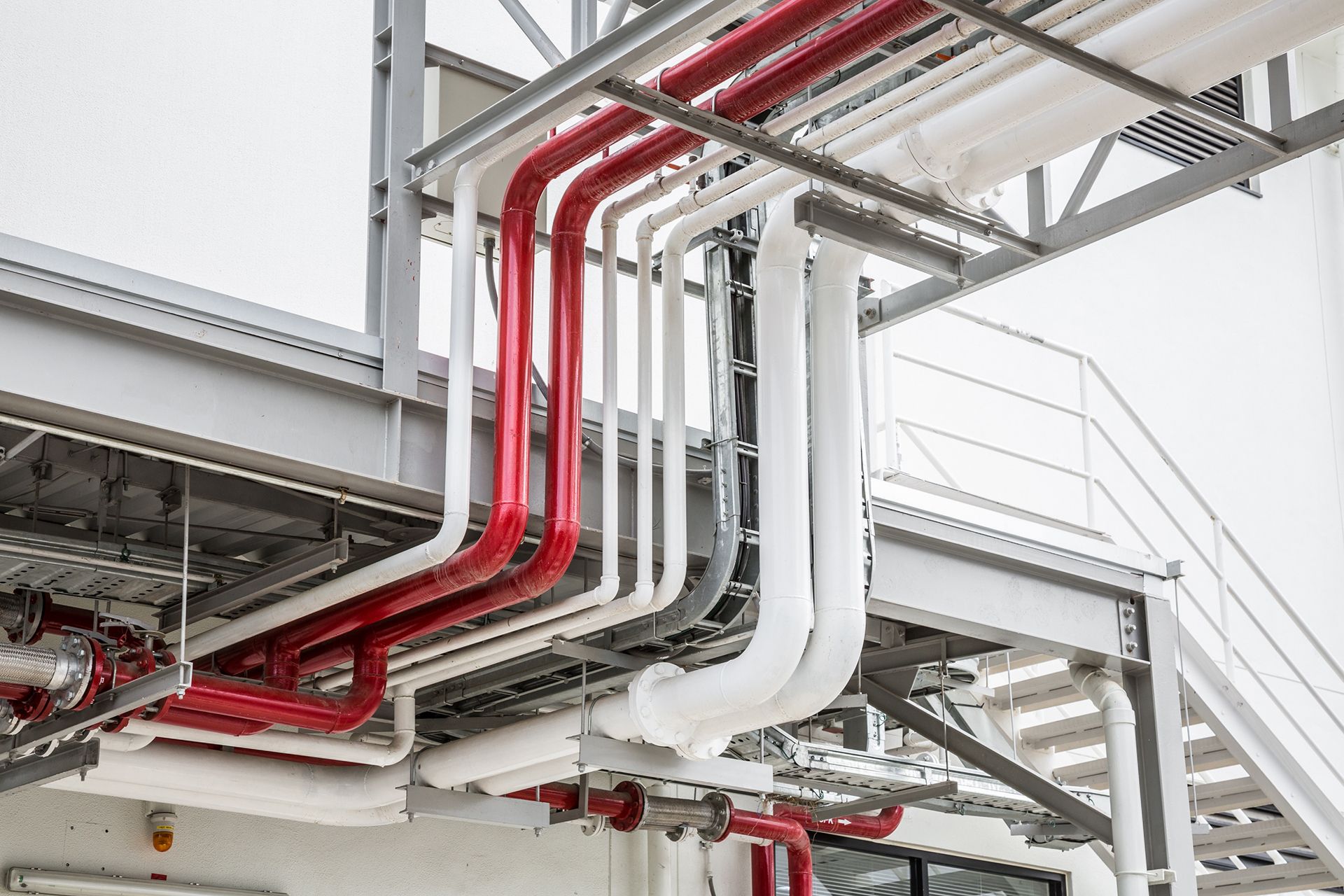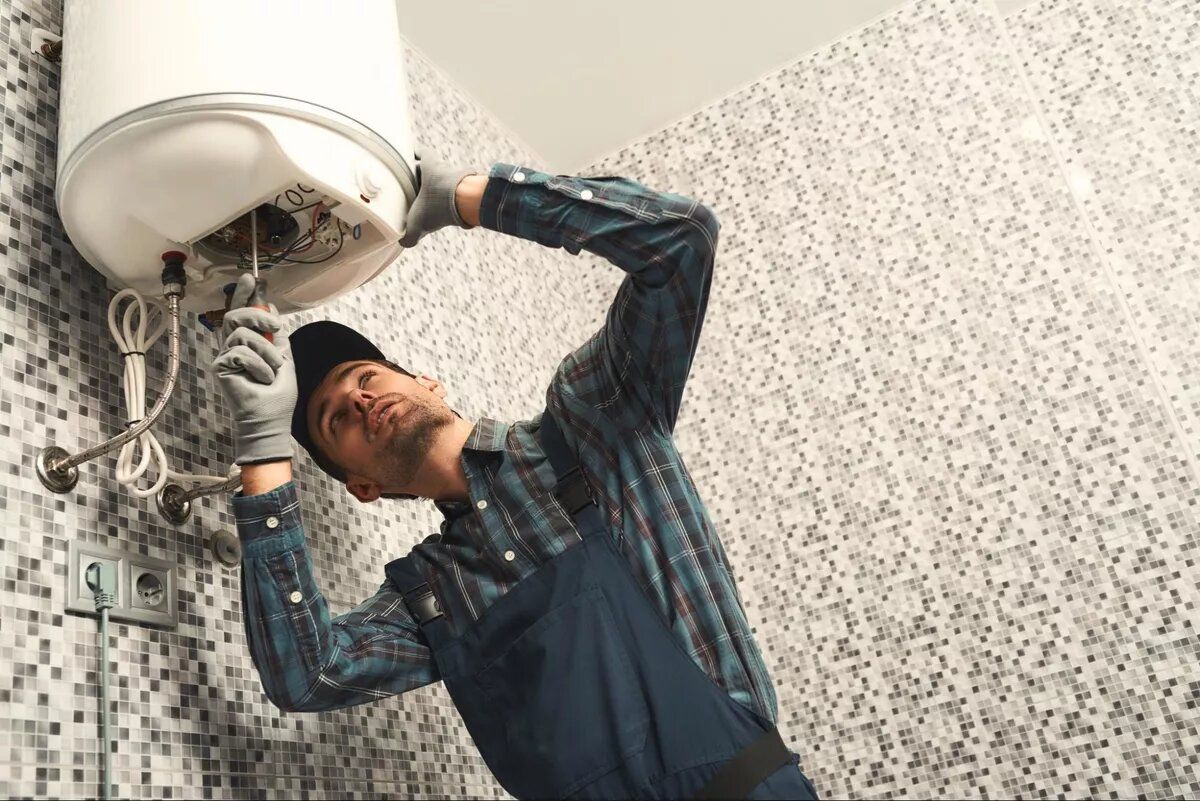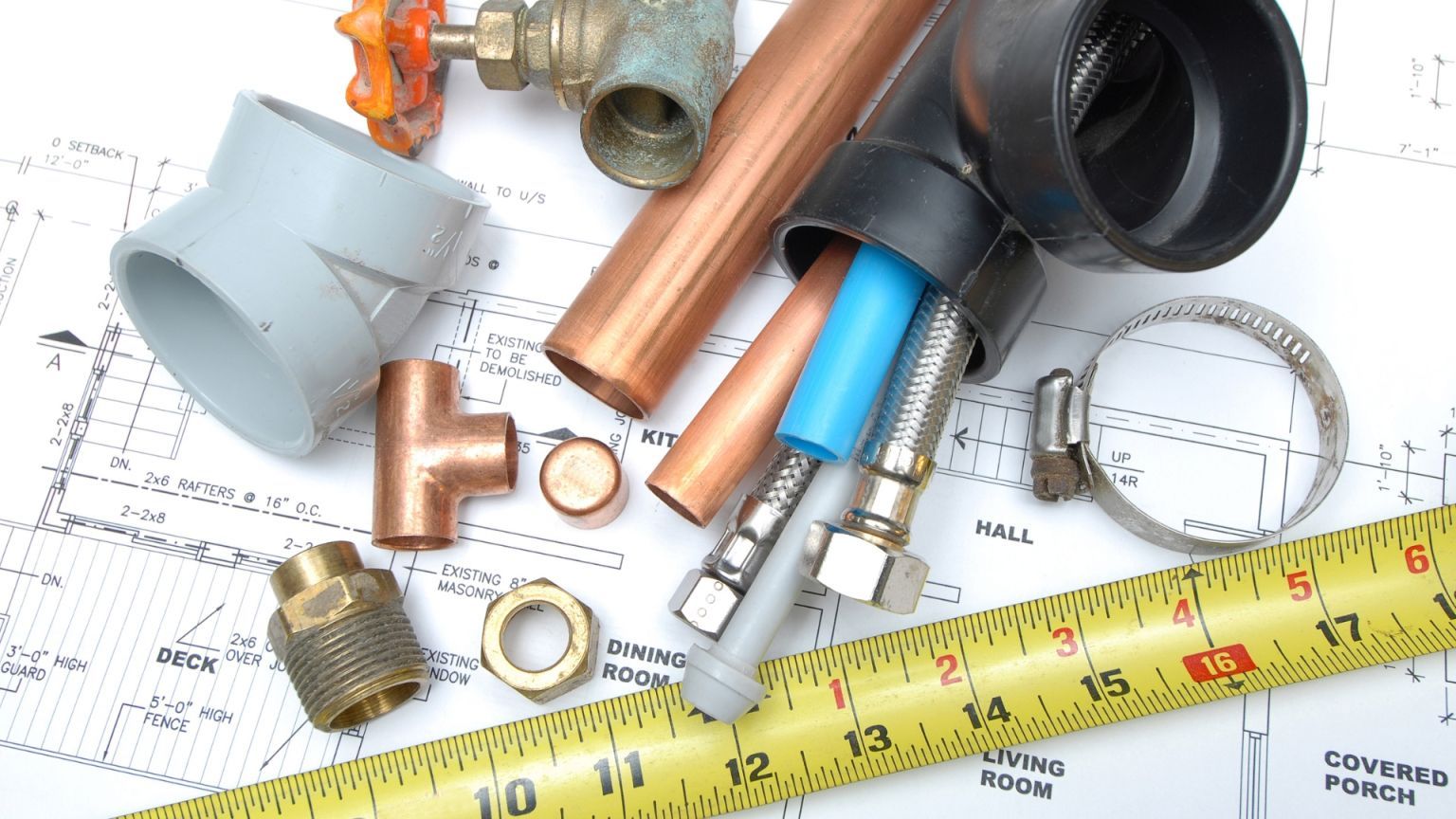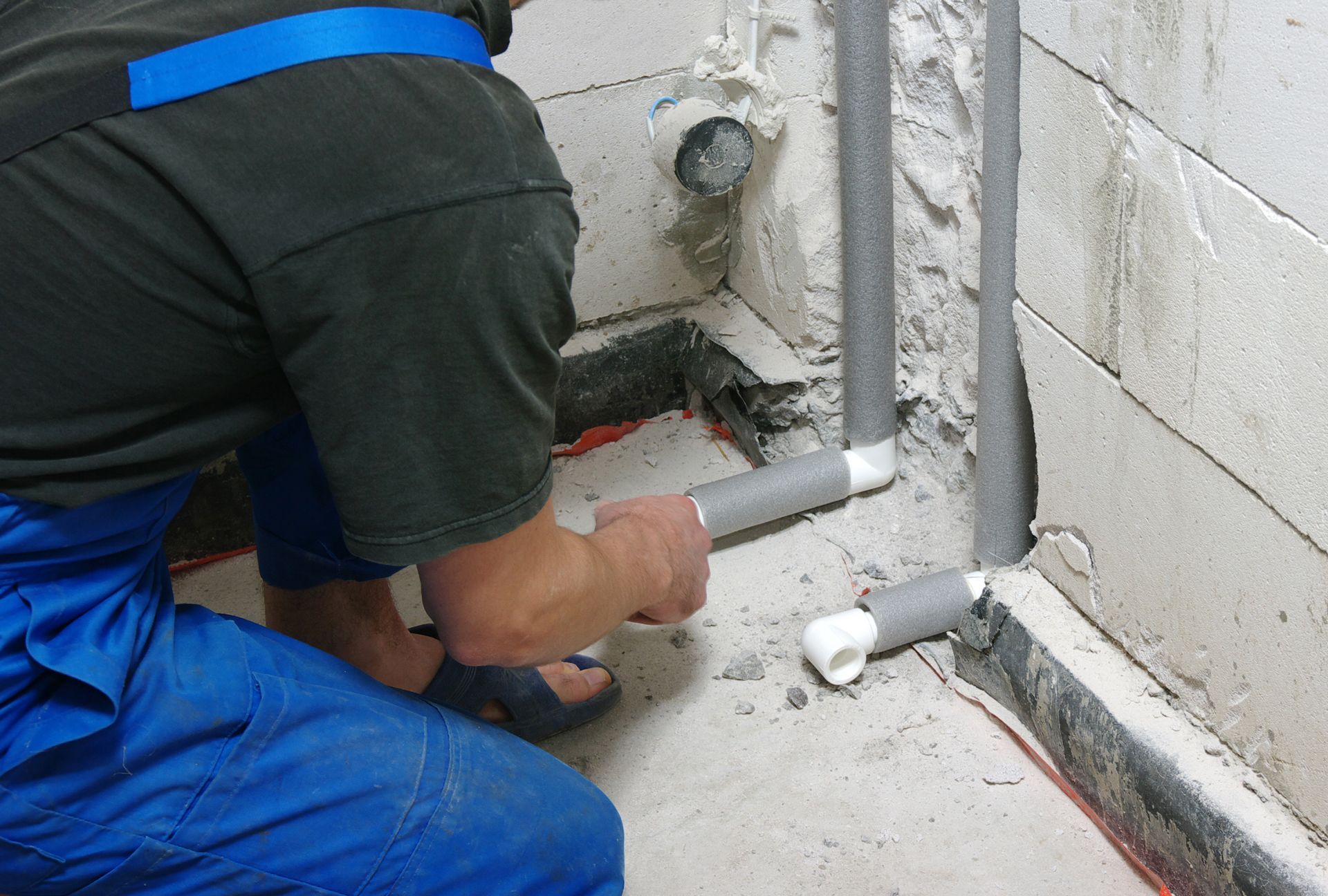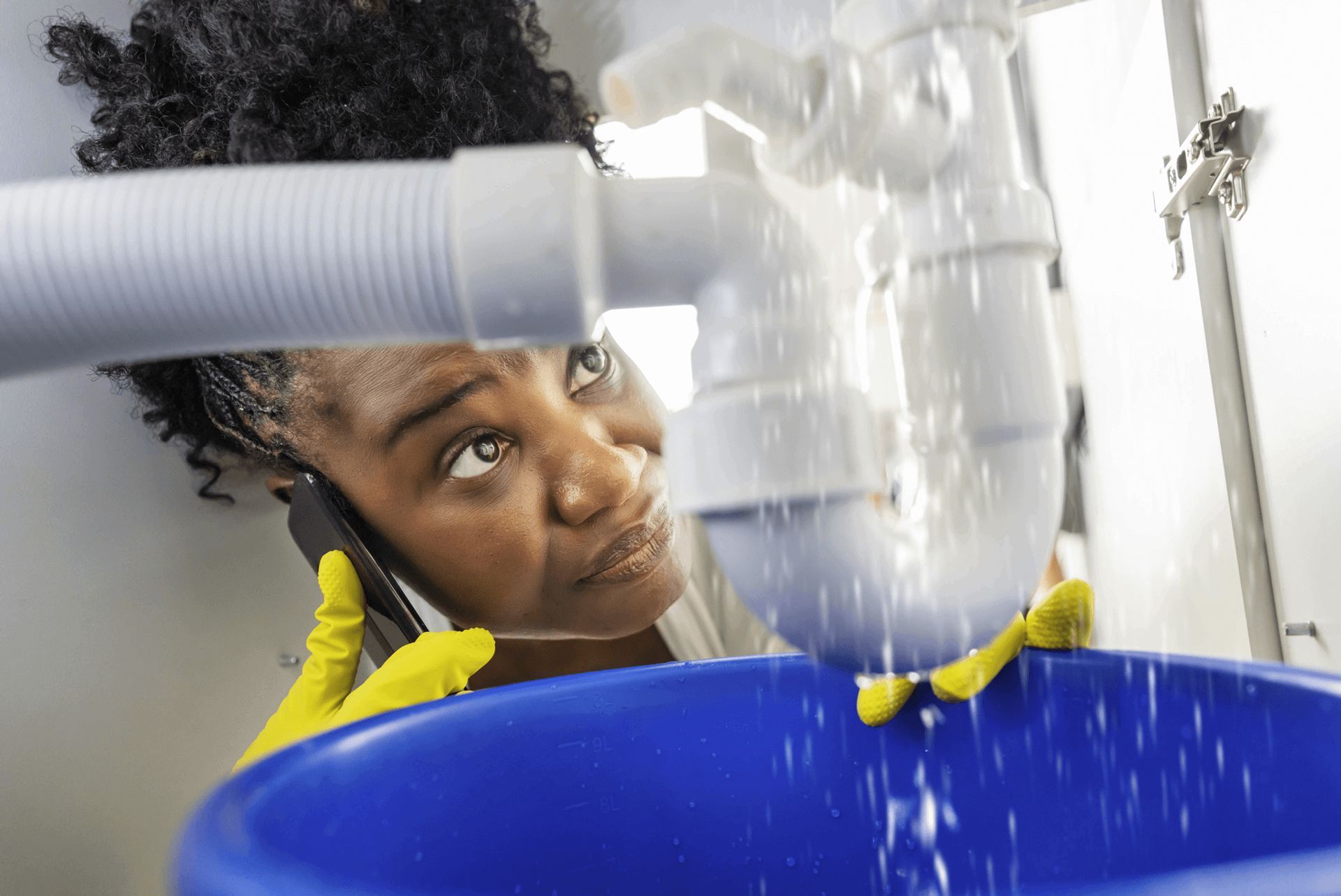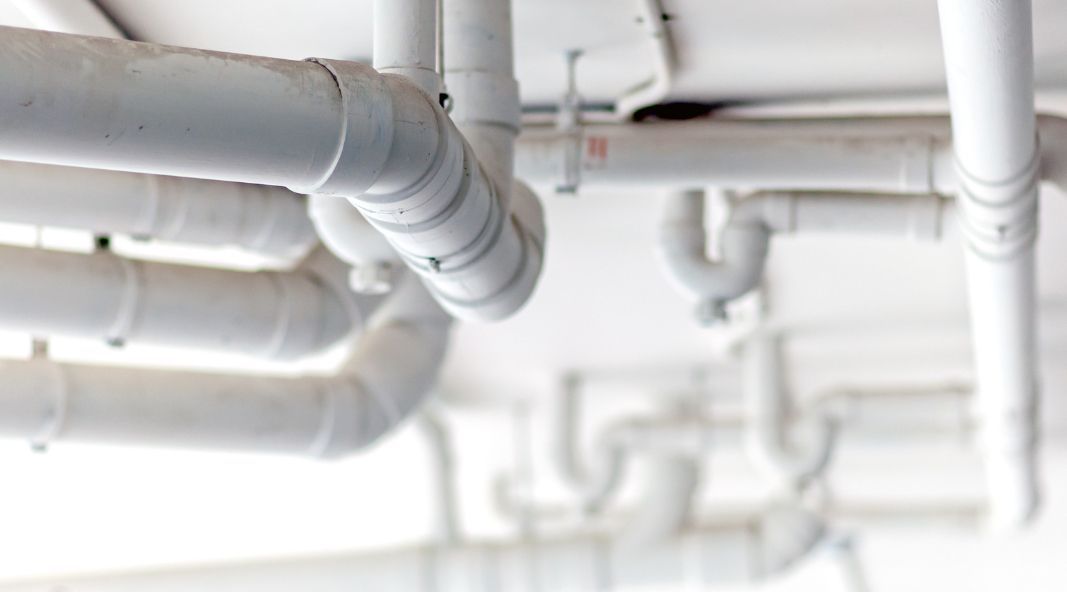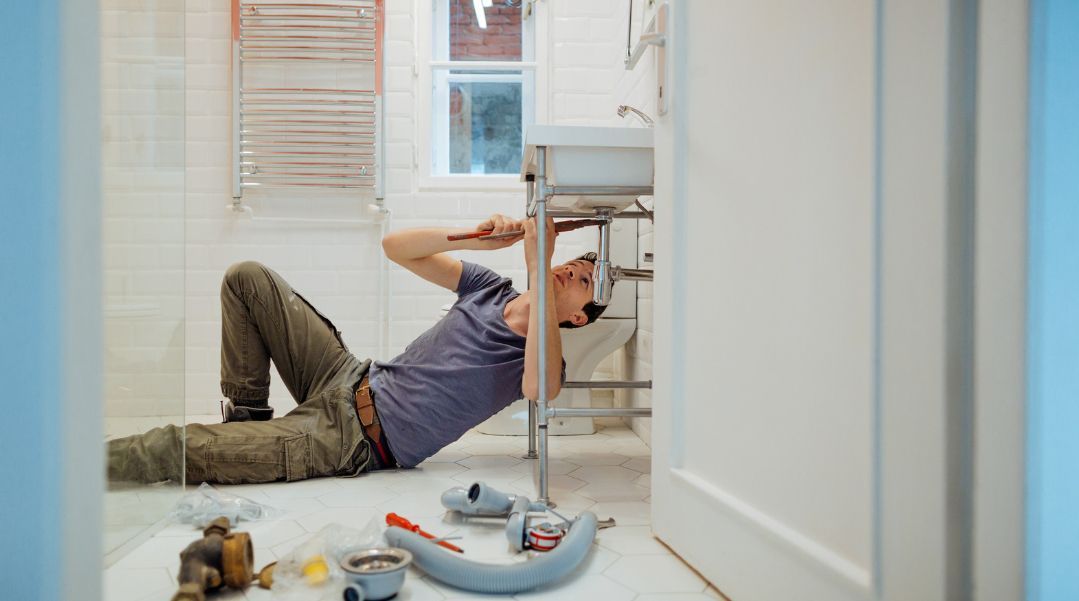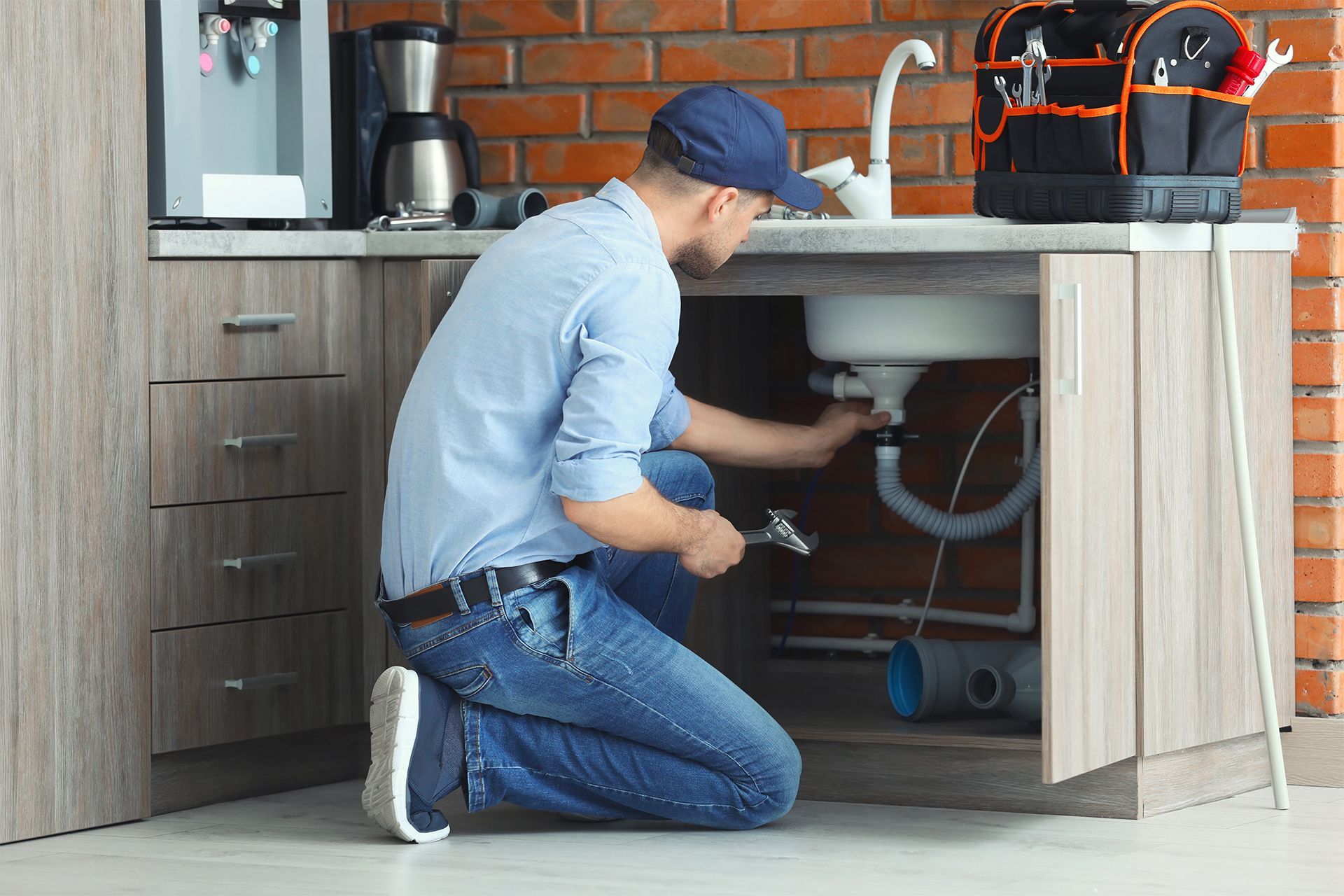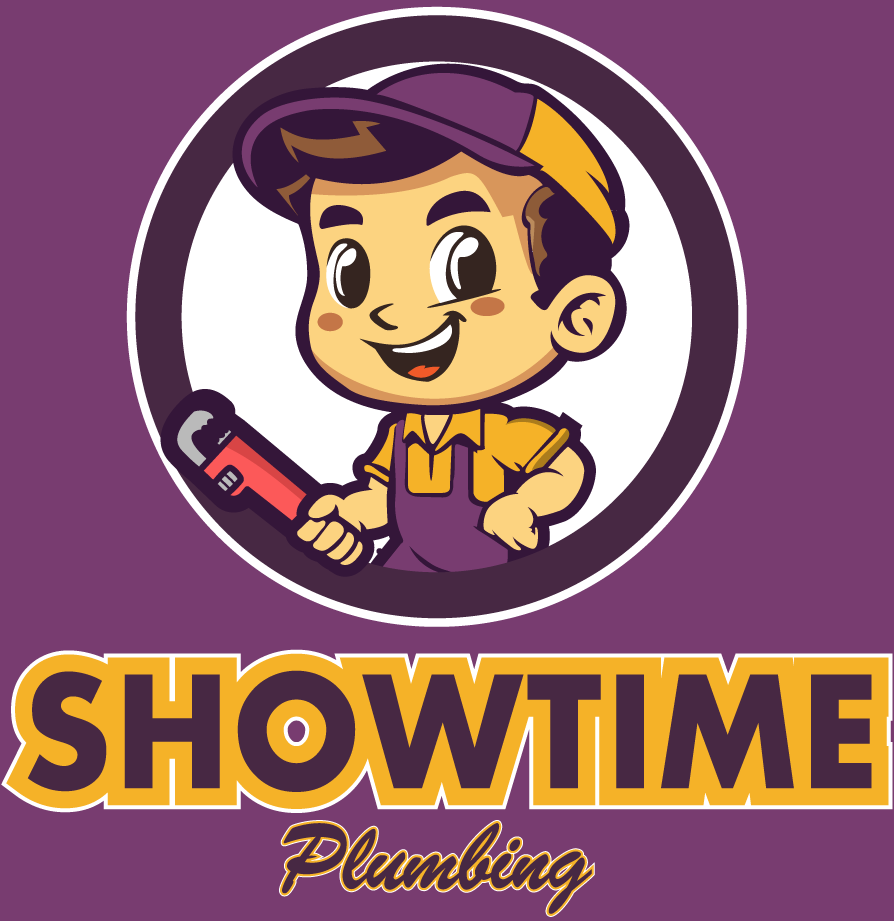Plumbing Basics: Your Comprehensive Guide to Understanding and Maintaining Your Home’s Plumbing System
Plumbing Basics – it’s an essential element of our day-to-day life, but we often only pay attention when something goes wrong. These plumbing basics are pivotal for our comfort, from the hot water that enables a soothing shower to the systems that ensure our living spaces remain sanitary. This guide is designed to illuminate the underappreciated complexities of household plumbing basics.
As you navigate through the maze of pipes, fixtures, and valves, our resourceful manual thoroughly explores plumbing basics within your dwelling. Arm yourself with the elemental knowledge needed to identify glitches, perform routine upkeep, and resolve prevalent hiccups. By clarifying these comprehensive subjects, we intend to instill self-assurance in addressing plumbing basics, fostering an efficiently operated home equipped to endure through the years.
Basics of Plumbing
Plumbing orchestrates the movement and management of water in buildings, ensuring the delivery of fresh water, efficient waste removal, and temperature regulation. These systems balance functionality with convenience, contributing to comfort and health in homes and enhancing operations in commercial spaces.
Different Types of Plumbing Systems
Discover the vital networks that make up our plumbing systems, each with unique functions to manage water and waste in our built environment.
Potable Water Plumbing System
This system ensures the delivery of clean, safe drinking water. It consists of a network of pipes, valves, and fixtures that transport water from its source directly to where it’s needed within a building for consumption, washing, and heating purposes.
Pros:
- Ensures availability of fresh water
- Maintains water pressure
Cons:
- Possible contamination risk if pipes are old
- Water pressure management can be challenging
Sanitary Drainage System
Focused on hygiene and health, the sanitary drainage system removes wastewater from buildings. It prevents the risk of disease by efficiently carrying waste to either septic tanks or municipal sewers.
Pros:
- Promotes hygiene and prevents diseases
- Efficient waste removal
Cons:
- Can be prone to blockages
- Issues might be complex to detect
Stormwater Drainage System
Designed to route rainwater away from buildings and infrastructure, this system reduces flooding risk, thereby protecting properties and landscapes from water damage.
Pros:
- Protects properties from water damage
- Reduces flooding risk
Cons:
- Requires regular maintenance to prevent blockages
- Incorrect installation can lead to ineffective drainage
Vent System
An often overlooked but critical part of plumbing, the vent system allows gases to escape. It ensures that water and waste move correctly through the drainage pipes by maintaining atmospheric pressure in the system.
Pros:
- Prevents foul smells
- Maintains proper drainage flow
Cons:
- It can become blocked, affecting system performance
- Professional help is often required for issues
Septic Systems
In areas without municipal sewer services, septic systems are used. They treat and dispose of household wastewater on-site, using a combination of natural processes and technology to reintegrate water into the environmental cycle safely.
Pros:
- Independence from municipal systems
- Recharges local water tables
Cons:
- Requires regular pumping and maintenance
- Potential for environmental damage if not properly maintained
Common Plumbing Problems and Solutions
Plumbing problems are inevitable in home maintenance, and understanding how they occur can help you resolve them more efficiently. In this chapter, we’ll discuss several common plumbing issues and offer step-by-step solutions to tackle them.
1. Leaky Faucets
Leaky faucets are not just annoying; they can also waste significant amounts of water over time. This problem often arises due to a worn-out washer inside the faucet handle.
Step-by-Step Solution:
- Turn off the water supply.
- Remove the handle of the faucet and the packing nut, exposing the stem.
- Remove that as well, and you will find the washer.
- If the washer is damaged or worn out, replace it. Then, assemble the faucet again.
2. Slow Drains
When water begins to drain slowly from a sink or tub, it is usually a sign of a partial blockage, often due to accumulations of hair, soap scum, or food waste.
Step-by-Step Solution:
- Remove the drain cap.
- Use a plumber’s snake or a wire hanger to remove any blockage.
- For more stubborn blockage, apply a drain cleaner following the product’s instructions.
3. Low Water Pressure
Low water pressure can make using the shower or other appliances hard. It can commonly result from sediment buildup in the faucet aerators or a compromised main water line.
Step-by-Step Solution:
- Clean the faucet aerators by removing them, soaking them in vinegar, and scrubbing them.
- If the problem persists, consult a professional, as the problem could lie with the main water line.
4. Running Toilet
A constantly running toilet can quickly raise your water bill. The issue typically occurs when the flapper valve, which controls the water passing from the cistern to the bowl, isn’t seating properly or when there’s an issue with the float mechanism.
Step-by-Step Solution:
- Adjust the float height to maintain the water level in the tank.
- If that doesn’t solve the problem, replace the flapper or the entire flush valve assembly.
5. Leaking Pipes
Leaks usually occur at the joints of the pipes. While corrosion is common, pipes can also leak due to bad pipe joints, temperature changes, or high water pressure.
Step-by-Step Solution:
- Switch off the main water valve.
- Apply a waterproof tape or epoxy putty over the leaking area as a temporary solution.
- However, a professional plumber should be contacted to replace the pipe or the faulty part in the joint, as necessary.
6. Water Heater Issues
Water heater issues are often signaled by insufficient hot water or unusual noises from the heater. This could result from sediment buildup in the water tank or faulty heating elements.
Step-by-Step Solution:
- Drain and flush the water heater tank to remove sediment.
- If that doesn’t work, replace the heating elements if necessary.
- If problems persist, hiring a qualified plumber to diagnose the issue is advisable.
Tips on When to DIY and When to Call a Professional
Deciphering when to handle plumbing issues and when to call a professional can save time and money and prevent potential disasters. This guidance helps you navigate the decision effectively, ensuring your home’s plumbing system remains functional and efficient.
- Minor Clogs: A plunger or a drain snake can often resolve simple clogs in sinks or toilets. DIY if water flow is slightly sluggish.
- Leaky Faucets: If you have basic tools and a new washer, fixing a dripping faucet can be a straightforward DIY task.
- Running Toilet: Adjusting the float or replacing the flapper are simple fixes you can do yourself with minimal tools.
- Low Water Pressure: If the issue is isolated to one faucet, cleaning the aerator or showerhead might solve it – a perfect DIY task.
- Leaking pipes or significant blockages: If you notice water damage or mold or can’t locate the source of a leak, it’s time to call a professional.
- Water Heater Problems: Due to the complexities and potential dangers (especially with gas-powered units), it’s prudent to seek professional assistance.
- Installation Tasks: Installing new pipes, toilets, or sinks can require specialized knowledge and tools. Professionals ensure these are installed correctly, avoiding future problems.
- Permits and Codes: Any work that may alter your home’s main lines or requires permits should be handled by a licensed professional familiar with local codes.
DIY Plumbing Tips
Empower your home maintenance skills with essential DIY plumbing fixes, key tools, and crucial safety measures to confidently tackle basic repairs and avoid common issues.
A. Basic Repairs and Maintenance Homeowners Can Do
- Replace worn-out washers in leaky faucets.
- Unclog drains with plungers or homemade mixtures.
- Insulate pipes to avoid freezing.
- Clean showerheads and aerators regularly.
- Adjust the water level in toilet tanks.
B. Tools Required for DIY Plumbing
- Wrench set for pipe and fixture adjustments.
- Plunger and plumber’s snake for blockages.
- Teflon tape to seal pipe connections.
- Screw drivers for fixture adjustments.
C. Safety Tips for DIY Plumbing
- Shut off the water supply before repairs.
- Check for leaks after repairs.
- Use gloves and goggles when needed.
- Avoid work near electrical wiring.
- Call professionals when gas lines are involved.
Plumbing Tools and Their Uses
Explore the essential plumbing tools and their strategic applications in different DIY plumbing tasks with this comprehensive guide.
Detailed Guide on Common Plumbing Tools
Wrenches (Adjustable & Pipe): Used for tightening/loosening fittings.
Uses: Used on pipes and fittings to secure a fit without damage.
Plunger: Indispensable for unclogging drains.
Uses: Ideal first tool for minor blockages.
Plumber’s Snake: Employed for more stubborn clogs.
Uses: Useful when a plunger fails to dislodge a clog.
Teflon Tape: Ensures watertight seals on threaded pipe connections.
Uses: Applied on all threaded connections to prevent leaks.
Screwdrivers: Vital for fixture adjustments.
Uses: Employed to disassemble or adjust fixtures.
Caulking Gun: Crucial for sealing leaks and maintaining plumbing system integrity.
Uses: Used for sealing gaps around faucets or toilets to prevent water escape.
Importance of Professional Plumbing Services
Professional plumbers demonstrate their necessity in dealing with major leaks, installing new pipes or fixtures, or addressing sewer line problems. Relying on professional services offers benefits such as expert handling of complex issues, correct tools and techniques, the assurance of long-term solutions and safety, time-saving, and prevention of future problems.
Tips on Hiring a Plumber
Selecting the right plumber is crucial for quality work and lasting results. Here are essential tips to guide you through hiring a dependable and experienced plumbing professional.
1. Identify Your Needs:
- Assess the plumbing issue or project scope.
- Determine if it’s an emergency or can be scheduled.
2. Research and Recommendations:
- Ask for recommendations from family and friends.
- Check online reviews and ratings on reputable sites.
3. Check Qualifications and Experience:
- Verify the plumber’s license and insurance.
- Consider years of experience and areas of expertise.
4. Compare Quotes:
- Get multiple bids for the job.
- Ensure quotes include the cost of materials and labor.
5. Ask the Right Questions:
- Inquire about guarantees and warranties.
- Ask for references from recent jobs.
6. Consider Professionalism and Communication:
- Notice their promptness and manner of communication.
- Assess their willingness to explain the problem and solution.
7. Review the Contract:
- Make sure all details are documented before work begins.
- Understand payment terms and completion timelines.
8. After-Service Care:
- Check if the service includes post-job cleanup.
- Understand the process for addressing any follow-up concerns.
Plumbing Safety Guidelines
A. Key Safety Measures in Plumbing Work
Always use tools correctly and wear protective gear. Know the plumbing layout and ensure proper ventilation when handling volatile substances.
B. Avoiding Common Hazards
Ensure a well-lit, clear workspace. Prioritize electrical safety, follow local plumbing codes, and maintain adherence to safety and legal standards.
Plumbing Maintenance Tips You Should Know
Routine Checks and Maintenance Practices
- Inspect pipes periodically for any leaks or rust.
- Regularly clean drains and toilets to prevent clogs.
- Test water flow and pressure from faucets and showers.
- Make sure the water heater is functioning correctly.
- Check for water discoloration, which may indicate pipe issues.
Seasonal Plumbing Maintenance Tips
- Winter: Insulate outdoor pipes to prevent freezing and bursting.
- Spring: Check for signs of leaks from pipes after winter thawing.
- Summer: Carry out sump pump inspections to prepare for rainstorms.
- Fall: Clean gutters and downspouts to prevent blockages from fallen leaves.
Final Thoughts
Understanding the basic principles of plumbing promotes efficient living in your home and helps avert potential plumbing mishaps. This guide has equipped you with knowledge that you can apply to enhance practices in maintaining your systems, making you proactive rather than reactive in dealing with common plumbing issues.
When professional expertise is indispensable, Showtime Plumbing LLC is poised to assist. Backed by years of industry experience, our dedicated team provides reliable, top-quality services, from regular maintenance tasks to emergency repairs and comprehensive system upgrades. A step towards superior and hassle-free plumbing by contacting us at (562) 822-5734 to schedule a service visit. Let us leverage our expertise to optimize your home plumbing setup for improved function and longevity.
